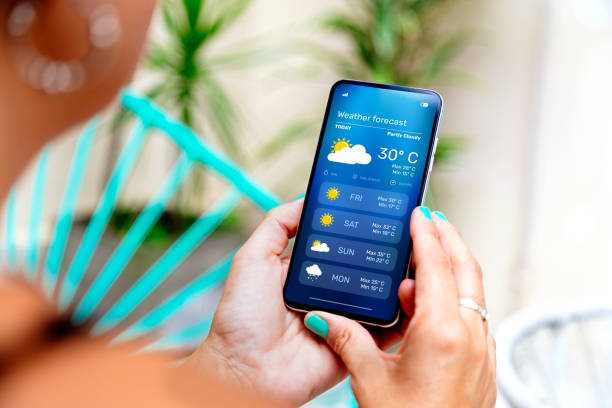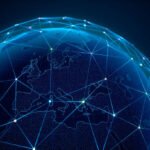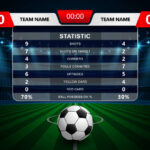Weather and climatic conditions have always put humanity under trial. Pre-modern civilizations supported themselves by relying on seasonal cultivation of crops, and some storm or flood or droughts could easily mean the difference between life and death. The world today with the global trade and megacities, interconnected economies and the like, has made the effects of the weather become pivotal than anywhere in history or current times. Due to the climatic alterations, severity of natural calamities like flood, cyclones, tsunami, and droughts has increased; hence precise weather forecasting has become an inevitable instrument to government, industries, as well as individuals.
Meteorology is no longer primarily the science of observing clouds, or winds. It can be seen as a field infused with technology and it utilizes modern satellites, radars and weather balloons, along with super computers and artificial intelligence to track, forecast and deal with weather.
Understanding Meteorology
The term meteorology comes with a Greek origin and is traced to the term meteor (mte eora (Greek) meaning a thing elevated in the air. Meteorology is the science of the study of the atmosphere and the weather temperature, rain, wind, clouds, storms to learn about the weather and make predictions about weather. Weather forecasting is one thing Meteorology is needed for, but also:
- Air and ship navigation.
- Food security, agriculture.
- Risk reduction of disasters.
- Air pollution (greenhouse gaseous emissions).
- Operations and Defense planning.
Therefore, meteorology itself is ingrained in contemporary living, e.g. the farmer who knows when to plough crops, governments who evacuate people prior to a cyclone.
Track Two: Early Developments: Foundations
Over centuries, man has been using physical indicators of weather such as cloud shapes, animal actions and the wind to predict weather changes.
1590s Thermometer (Galileo Galilei)
Permitted the temperature to be measured even in an accurate way.
1643 Barometer (Evangelista Torricelli)
The instrument determined the pressure of the atmosphere so it was used to forecast storms and clear days.
1664 Hygrometer (Francesco Folli)
Humidity level estimated crucial in the perception of monsoon.
These inventions introduced the start of instrument based meteorology. Subsequently localized weather networks gathered information in the area of weather stations and forecasts were, however, confined to local scale.
The challenge of Observational Meteorology
Radiosondes Weather Balloons
In the 20th century, scientists launched meteoglider into the atmosphere. Measured with attached radiosondes were:
- Temperature
- Pressure
- Humidity
- Velocity of wind and direction
This data was transmitted back by the radiosonde once a second, and scientists could then comprehend weather conditions at various altitudes. Weather balloons had the capability of reaching up to 32 km and then burst and provided critical insight into the upper atmosphere.
Traditional Radar and Doppler Radar
World War II expressed the rise of the application of meteoric radar. Scientists found out that rain and snow on higher levels reflected radio waves and this gave a way to far away storms.Radar has become a keystone of real-time storm tracking today.
Traditional radar
Gives precipitation location and strength.
Doppler radar
Monitors the motion as well as rotation of the storms and plays a vital role in the detection of tornadoes and cyclones.
The Space Age: Spacecrafts and World Prediction
Space-based meteorology The first satellite weather satellite was the TIROS-1 (1960). Satellites provided:
- A world perspective of the weather.
- Exhaustive surveillance of storms, hurricanes and typhoons.
- Advance notice of wildfire smoke and ash and volcano and ice cover on the poles.
- Tracking of climatic chemistry (O3, heat-trapping gases, maisma).
Modern satellites orbit at a few hundreds of kilometers above the earth and within a number of minutes, emit details and information on a fine image.
They still occupy the leading position as the means of monitoring large-scale weather processes, such as cyclones a few thousand kilometers across.
Natural Disaster Forecasting
Cyclones and Hurricanes
One of the most lethal natural hazards is the occurrence of cyclones. Early warning of meteorology is given through:
- Examining the bias and extremity of rotation of storms through Doppler radar.
- Predicting the tracks of the cyclones and their landfall-time using satellites.
- Using supercomputer models to input data and re-create storm action.
- In India and Bangladesh, early warning systems have limited the loss of life due to cyclones to the hundreds whereas it used to kill hundreds of thousands during the 1970s.
Tsunamis and floods
- In conjunction with oceanographic networks, meteorological services work to:
- Check rain falls and discharge density of the rivers.
- Establish GPS buoys and ocean bottom detectors to determine tsunami.
- Evacuate the issue through radio, mobile and television.
- To illustrate, in the 2004 Indian Ocean Tsunami, early warning systems were not present, which led to huge losses of life. Such systems have advanced very much today.
Earthquakes and solid vibration
- Meteorology is not confined to geology, seismic networks are commonly cooperated with weather services.
- Instantly, movements of the ground are sensed by seismometers.
- The epicenter and magnitude is analyzed by the digital systems in seconds.
- Trains can be stopped, nuclear power plants shut down, and people warned in advance by use of early-warning networks.
The Digital Age: AI, Supercomputers and Big Data
Atmospheric models have the capacity to solve fluid dynamics and thermodynamics equations at the speed of a supercomputer.
Technology in the Modern Forecasting Role
AI and ML
- Reflect on the climate of the past.
- Better cyclone and flood forecast.
- Give hyper-local predictions to the farmers and urban planners.
Supercomputers
- Able to complete quadrillions of calculations in a second.
- Operate at an accelerated pace such as faster than real weather models.
Internet of Things (IoT)
- Local conditions are measured by networks of inter-connected sensors.
- Information is fed to central forecasting systems.
Mobile Technology
- Instant warnings are issued to citizens on storms, heatwaves or floods.
- The use of mass SMS alerts is sent by the government in the event of an emergency.
Case Study of Meteorological challenges faced by Bangladesh
Bangladesh is the most endangered state in terms of weather because it is based on the region of Bengal and bound:
- Seasonal floods.
- Tropical cyclones.
- Alterations of rainfall patterns.
The death of more than 300,000 people by such cyclones as Bhola (1970) has already happened in the past. This is no longer the case today since high-tech meteorological systems have reduced the number of casualties to a drastic extent. Although Cyclone Amphan (2020) was one of the strongest of the past decades, it did not kill as many people as could be expected because timely evacuation warnings were issued.
In Bangladesh Meteorological Department, it is currently being used:
- The real-time monitoring of radars, satellite, GPS stations.
- Rural community-based alerts.
- Forecasting based on artificially intelligent models to estimate storm surges.
This is evidence of the fact that meteorological investment saves lives, crops, and bolsters economic resilience.
Issues in Meteorology
There are limitations to the progress made in forecasting:
Uncertainty
Weather is wild and minor measurement errors can expand into huge errors.
Data Vacuums
There are no monitoring stations in remote areas, oceans and war zones.
Inequality in Technology
The poorer countries find it difficult to invest in sophisticated satellites or super computers.
Public Trust
There are still false warnings that some communities take no notice of.
Future of Metreology
The future of meteorology will combine AI, climate modeling and the collaboration of the entire world. Innovations include:
- Quantum computation to simulate faster.
- Sensors: micro-climate system with nanotechnology.
- Combination of meteorology, seismology and oceanography using AI to predict disasters.
- Community forecasting, in which the local data generates input to the worldwide networks.
Meteorology will not only predict future weather, but will also inform climate and agricultural bodily responses such as long-term adaptation to changing weather patterns, management in water accessibility and other forms of disaster preparedness as climatic change progresses.
Conclusion
Indeed, meteorology has gone a long way since Galileo thermometers made of the glass world, nowadays, machine-based satellites orbit the Earth. It has become one of the most effective weapons that man has to fight climate challenges. The study of meteorology helps save millions of lives annually, it saves food stores, and prevents economic loss by issuing proper early warnings. With increased occurrence of disasters in the climate change scenario, sacrificing meteorology investment is out of the question. Every life on the planet is affected by the science of meteorology, it is the study that can reach the poorest farmer waiting on the rain to fall and even the flight plans of international airlines. It is global collaboration, high-order technologies and community involvement in the future so that there is no storm or disaster without catching humanity on the wrong foot.
FAQ’s
Q1. What meteorological instruments are there?
Typical meteorological equipment are:
- Thermometer→ These measure temperature.
- Barometer → measures air pressure
- Hygrometer → A hygrometer measures humidity
- Anemometer → wind speed
- Weather balloons/ radiosondes → take high altitude measurements
- Radar & Doppler radar → identifies precipitation and movement of the storms
- Satellites → help to track conditions on a worldwide scale
Q2. What is the mechanism of weather balloons?
A radiosonde has all the major telescopes components in measurement of temperature, pressure, humidity and wind that is aerially balloon elevated by weather balloons. All that data gets relayed back to scientists who can now have a clue of the atmosphere conditions as high as 32 km above the earth.
Q3. What role does weather forecasting play in the cases of natural catastrophes?
Forecasting enables the authorities to:
- Make early cyclones, floods, tsunami and storm warnings
- Save humankind through evacuation safely
- Provide security to crops and infrastructure
- Minimize death and damage of property
Q4. What is meteorology and how is it applied with artificial intelligence?
Machine learning and AI can examine past and present weather conditions thereby increasing the accuracy of the short term weather forecasts and the management of extreme weather events (localized weather), and weather disasters.
Q5. What is the role played by meteorology in daily life?
Meteorology affects:
- Planting and picking of crops (agriculture)
- Safety on the move and tourism
- Disaster preparedness
- Energy management
- Health of the populace in the case of a heatwave, flood or storm
Q6. What is the relevance of supercomputers in meteorology?
Supercomputers can count hundreds of quadrillions of calculations every second and can do intricate simulations with the atmosphere. They assist in developing quality, high resolution forecasts and project natural disasters on both the local and global scales.
Q7. What can be expected of meteorology?
Further developments are:
- AI, IoT and Big Data integration
- Quantum computing in regard to faster predictions
- Micro-climate monitoring at a community-level
- Sophisticated early-warning systems to every kind of natural catastrophe








